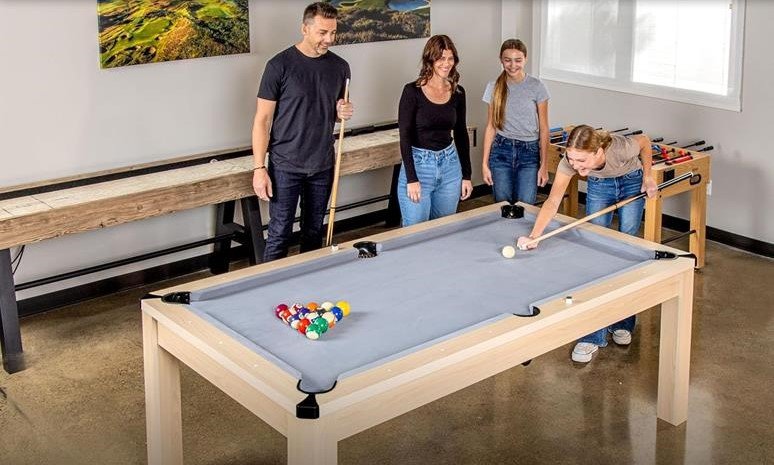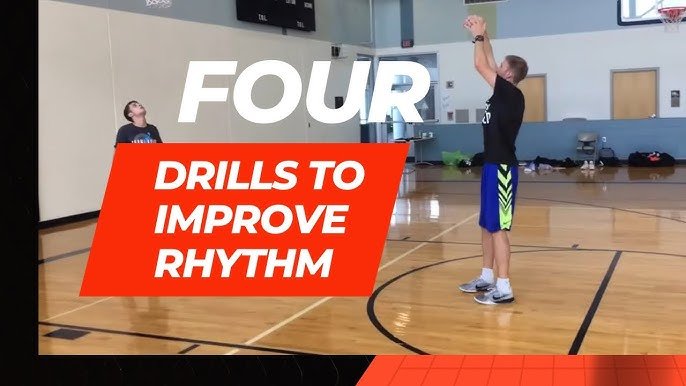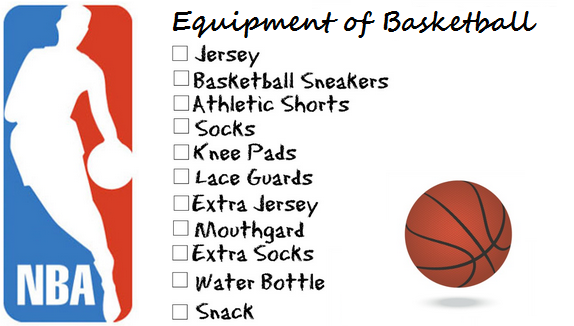Are you curious about basketball but feel overwhelmed by all the rules? Knowing the basic rules of basketball can instantly make the game more exciting and easier to follow.
Whether you want to play with friends, watch games with confidence, or just understand what’s happening on the court, this guide is made for you. By the time you finish reading, you’ll feel ready to jump into the action or impress others with your knowledge.
Let’s break down the essentials so you can enjoy basketball like never before!
Court And Equipment
Basketball is played on a special court with specific equipment. These help keep the game fair and fun.
Knowing the court layout and the gear players use is key to understanding basketball rules.
Basketball Court Layout
The basketball court is a rectangular floor where the game happens. It has marked lines and zones.
The main parts are the sidelines, baselines, free throw line, and three-point line. The hoop is at each end.
- The court is 94 feet long and 50 feet wide in professional play.
- The free throw line is 15 feet from the backboard.
- The three-point line varies but is about 23.75 feet from the basket in the NBA.
- The key or paint area is the rectangular zone near the basket.
- The hoop is 10 feet above the floor.
Essential Gear And Uniforms
Players must wear the right gear for safety and comfort. The uniform also shows team identity.
The main gear includes the basketball, shoes, and uniforms. Each item has a specific purpose.
- Basketball: Made of leather or composite material, size varies by age and league.
- Shoes: Designed for ankle support and good grip on the court.
- Uniforms: Usually a jersey and shorts with team colors and numbers.
- Socks: Must be comfortable and moisture-wicking.
- Optional gear: Mouthguards and knee pads for extra protection.
Team Setup
Basketball teams have specific roles to play on the court. Each player’s position helps the team work well together.
Understanding team setup is important to follow the rules and enjoy the game.
Player Positions
There are five main player positions in basketball. Each position has its own responsibilities.
- Point Guard:Leads the offense and controls the ball.
- Shooting Guard:Focuses on scoring points from outside and inside.
- Small Forward:Versatile player who can score and defend.
- Power Forward:Plays near the basket, rebounds, and defends.
- Center:Usually the tallest, blocks shots and scores close to the basket.
Substitutions And Roles
Teams can change players during the game. Substitutions let players rest or change strategy.
| Role | Purpose | Time on Court |
| Starter | Begins the game on the court | Most of the game |
| Substitute | Replaces starters to keep energy up | Varies by game |
| Bench Player | Waits to join when needed | Depends on coach’s decision |
Game Duration And Scoring
Basketball is a fast-paced sport with clear rules on how long the game lasts. The scoring system shows how teams earn points. Understanding these basics helps you enjoy the game more.
Both game length and scoring rules keep the game fair and exciting. Players and fans follow these rules closely.
Length Of The Game
A basketball game usually has four quarters. Each quarter lasts 10 or 12 minutes, depending on the league. There is a short break between quarters and a longer break at halftime.
If the game is tied at the end, extra time called overtime is played. Overtime periods are shorter, often five minutes.
- Each quarter lasts 10 or 12 minutes
- There are four quarters in total
- Halftime break is about 15 minutes
- Overtime is 5 minutes if the score is tied
How Points Are Scored
Teams score points by putting the ball in the opponent’s basket. Different shots give different points. Most shots are worth two points.
Shooting from behind the three-point line earns three points. Free throws after fouls are worth one point each.
- Two points for a regular field goal
- Three points for a shot beyond the three-point line
- One point for each successful free throw
Basic Gameplay Rules
Basketball is a popular sport played worldwide. It has simple rules that make it easy to enjoy.
Understanding the basic gameplay rules helps players and fans follow the action better on the court.
Starting The Game
The game starts with a jump ball at the center circle. Two players from opposing teams jump to tap the ball to their teammates.
Teams try to gain control and begin their offense after the jump ball. The clock starts once the ball is tapped.
Dribbling And Passing
Players move the ball by dribbling or passing. Dribbling means bouncing the ball while walking or running.
- Players must keep dribbling to move with the ball.
- Passing means throwing the ball to a teammate.
- Traveling occurs if a player moves without dribbling.
- Double dribble happens when a player stops dribbling and starts again.
Shooting Rules
Players try to score points by shooting the ball into the opponent’s basket. Shots can be made from different distances.
| Shot Type | Points | Description |
| Free Throw | 1 | Unopposed shot from the free throw line after a foul |
| Field Goal | 2 | Shot made inside the three-point line |
| Three-Point Shot | 3 | Shot made beyond the three-point line |
Violations And Fouls
Basketball has rules to keep the game fair and safe. Violations and fouls are important parts of these rules. They help control how players move and interact on the court.
Violations happen when players break certain rules about moving or handling the ball. Fouls occur when players make illegal physical contact. Both affect the flow of the game and scoring chances.
Common Violations
Violations are rule breaks that cause the other team to get the ball. They do not involve physical contact. Some common violations are easy to spot.
- Traveling: Moving your feet too much without dribbling the ball.
- Double Dribble: Dribbling the ball with both hands or stopping and restarting dribble.
- Carrying: Holding the ball too long or turning your hand under the ball while dribbling.
- Backcourt Violation: Taking the ball back across the center line after crossing it.
- Three-Second Violation: Staying in the key (paint area) for more than three seconds.
Types Of Fouls
Fouls happen when a player makes illegal contact with an opponent. They can be personal or technical fouls. Each type affects the game differently.
- Personal Fouls: Physical contact like pushing, hitting, or holding another player.
- Technical Fouls: Breaking rules like arguing with referees or unsportsmanlike behavior.
- Flagrant Fouls: Severe or dangerous contact that can hurt another player.
Players who commit many fouls may have to leave the game. Teams get free throws or the ball after certain fouls.
Free Throws
Free throws are shots taken without defense after some fouls. They give players a chance to score points easily. Each free throw is worth one point.
The number of free throws depends on the foul type and game situation. Players stand at the free-throw line and try to make the shot while others wait outside the paint.
- One free throw: Awarded after a foul during a successful shot or special cases.
- Two free throws: Given for most fouls during shooting attempts.
- Three free throws: Given if the player was fouled while attempting a three-point shot.
Defense And Offense
Basketball has two main parts: defense and offense. Defense means stopping the other team from scoring. Offense means trying to score points.
Both defense and offense need good skills and teamwork. Players use different strategies and moves in each part.
Defensive Strategies
Defense is about guarding your opponents and stopping their shots. Players try to block passes and make it hard to score.
Good defense needs quick feet and good awareness. Teams use different strategies to protect the basket.
- Man-to-Man Defense: Each player guards one opponent closely.
- Zone Defense: Players guard specific areas on the court.
- Press Defense: Applying pressure to the offense to force mistakes.
- Help Defense: Supporting teammates when they get beaten.
Offensive Moves
Offense is about scoring points by shooting or passing. Players use moves to get past defenders.
Good offense needs teamwork and smart decisions. Players try to find open spots to take good shots.
- Dribbling: Moving with the ball to find space.
- Passing: Sharing the ball with teammates.
- Shooting: Throwing the ball into the basket.
- Screening: Blocking defenders to free a teammate.
Referee Signals
Referee signals help players and fans understand the calls made during basketball games. These signals use hand gestures to show what rule was broken or what type of play occurred.
Learning common referee signals makes watching basketball easier. It also helps players follow the rules better.
Common Calls
Referees use specific hand signals to indicate common calls. Each signal tells players and coaches about fouls, violations, or stoppages.
- Personal Foul:The referee touches their shoulder or chest to show a player committed a foul.
- Traveling:The referee rotates their fists around each other to signal a player moved illegally.
- Double Dribble:The referee pats the top of their head with one hand.
- Three-Second Violation:The referee raises three fingers to show a player stayed too long in the key area.
- Out of Bounds:The referee points with one hand toward the team that will get the ball.
Hand Signals Explained
| Signal | Meaning | Description |
| Arm Raised | Foul | The referee raises one arm straight up to stop play and signal a foul. |
| Hands on Hips | Timeout | The referee places hands on hips to show a timeout has been called. |
| Closed Fist | Jump Ball | The referee holds a closed fist to indicate a jump ball situation. |
| Open Palms | Violation | The referee shows open palms to signal a rule violation like double dribble or traveling. |
| Pointing Finger | Direction | The referee points to show which team gets the ball after a stoppage. |
Frequently Asked Questions
What Are The Basic Basketball Game Rules?
Basketball rules include dribbling, passing, shooting, and defending. Each team tries to score by shooting the ball into the opponent’s hoop. Players must follow rules like no traveling and no double dribbling. Games are divided into quarters with a time limit.
How Many Players Are On A Basketball Team?
Each basketball team has five players on the court at one time. Teams can have substitutes on the bench for player changes. Positions include guards, forwards, and a center. The team works together to score and defend against the opponent.
What Is The Scoring System In Basketball?
A basket scores two points if shot inside the three-point line. Shots made beyond the three-point line earn three points. Free throws count as one point each. The team with the most points at the end wins the game.
What Are Common Fouls In Basketball?
Common fouls include blocking, charging, and holding opponents. Players must avoid illegal contact to prevent fouls. Fouls can result in free throws for the opposing team. Accumulating too many fouls can lead to player disqualification.
Conclusion
Basketball’s basic rules keep the game fair and exciting. Understanding these rules helps players enjoy the sport more. Respecting boundaries, dribbling properly, and knowing scoring methods are key. Players should always be aware of fouls. This ensures a smooth game flow.
Knowing the rules enhances skills and teamwork. Coaches and referees enforce these rules strictly. A clear grasp of these rules benefits all participants. From beginners to seasoned players, everyone gains. Basketball becomes more enjoyable with rule knowledge. So, keep learning and playing.
Enjoy the game!


